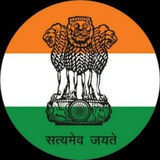🔥 Mains Marathon has begun!
💡Grab our most effective evaluation plan and get your Mains preparation on the right track!
Unlimited
GS + ESSAY + OPTIONAL Evaluation
➕
Mentorship Support by Toppers!
💯 Other Features:
1) Freedom to practice questions from any source
2) Full Length Tests of any institute covered
3) Access to Toppers copies
And much more!
🏆 Toppers Testimonials: HERE
👉To Subscribe or Free DEMO
www.ConvertIAS.com
📞For any query contact us www.tg-me.com/convertias or 9108075088
💡Grab our most effective evaluation plan and get your Mains preparation on the right track!
Unlimited
GS + ESSAY + OPTIONAL Evaluation
➕
Mentorship Support by Toppers!
💯 Other Features:
1) Freedom to practice questions from any source
2) Full Length Tests of any institute covered
3) Access to Toppers copies
And much more!
🏆 Toppers Testimonials: HERE
👉To Subscribe or Free DEMO
www.ConvertIAS.com
📞For any query contact us www.tg-me.com/convertias or 9108075088
tg-me.com/CSE_EXAM/42947
Create:
Last Update:
Last Update:
🔥 Mains Marathon has begun!
💡Grab our most effective evaluation plan and get your Mains preparation on the right track!
Unlimited
GS + ESSAY + OPTIONAL Evaluation
➕
Mentorship Support by Toppers!
💯 Other Features:
1) Freedom to practice questions from any source
2) Full Length Tests of any institute covered
3) Access to Toppers copies
And much more!
🏆 Toppers Testimonials: HERE
👉To Subscribe or Free DEMO
www.ConvertIAS.com
📞For any query contact us www.tg-me.com/convertias or 9108075088
💡Grab our most effective evaluation plan and get your Mains preparation on the right track!
Unlimited
GS + ESSAY + OPTIONAL Evaluation
➕
Mentorship Support by Toppers!
💯 Other Features:
1) Freedom to practice questions from any source
2) Full Length Tests of any institute covered
3) Access to Toppers copies
And much more!
🏆 Toppers Testimonials: HERE
👉To Subscribe or Free DEMO
www.ConvertIAS.com
📞For any query contact us www.tg-me.com/convertias or 9108075088
BY CSE EXAM ( UPSC prelims mains) CAPF
Share with your friend now:
tg-me.com/CSE_EXAM/42947
